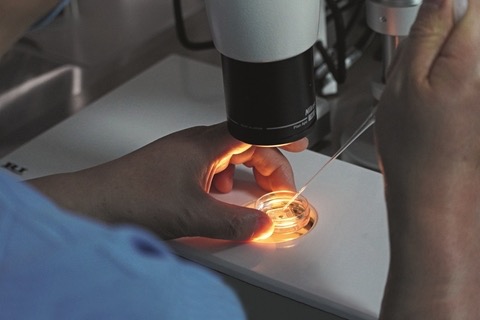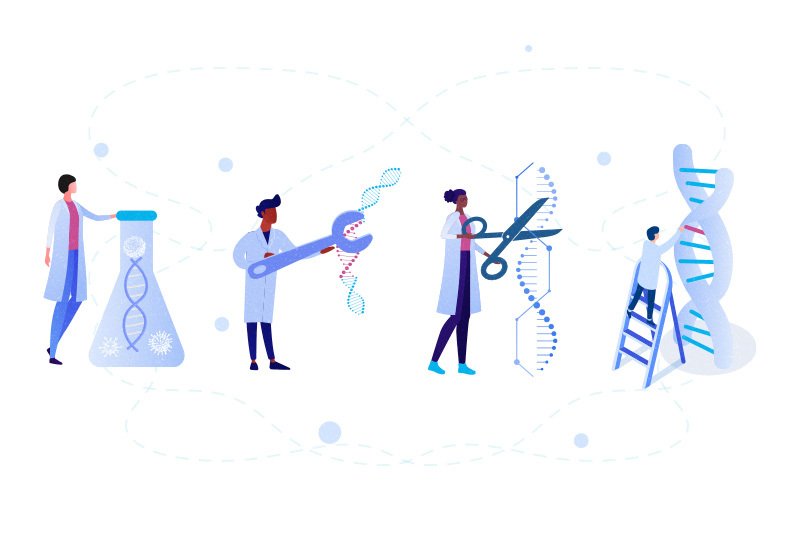The core value of Assisted Reproductive Technology (ART) and the evolution of the technology
In the field of contemporary reproductive medicine, Assisted Reproductive Technology (ART) has become a key means of solving infertility problems. By integrating the achievements of molecular biology, endocrinology and embryology, modern ART has formed a complete technical system including in vitro fertilization (IVF), preimplantation genetic testing (PGT), intracytoplasmic sperm injection (ICSI), etc., which has realized the fertility wishes of millions of families around the world. It has helped millions of families around the world to realize their fertility wishes.

Core Modules of Assisted Reproductive Technology System
- Reproductive cell processing technology
(1) Egg collection and optimization
At the stage of egg collection, the clinic mainly adopts the controlled ovulation (COH) technique, in which the ovaries are stimulated by recombinant FSH drugs to obtain multiple mature oocytes. Subsequently, oocyte maturity assessment was performed to determine the stage of meiosis using polar fluorescent staining. For immature oocytes, special treatment was performed using the in vitro maturation of the oocyte mound complex (IVM) technique to enhance their developmental potential.
(2) Sperm processing and optimization
The sperm optimization process includes three key steps: firstly, high viability sperm are separated by density gradient centrifugation, and the recovery rate is usually not less than 70%; secondly, forward motile sperm are obtained by the Swim-up method, and the percentage of forward motile sperm is required to be more than 50%; and lastly, sperm energy metabolism is evaluated by the mitochondrial function assay, and the mitochondrial function is quantified by the JC-1 staining technique. Finally, the energy metabolic status of spermatozoa was assessed by mitochondrial function assay, and the mitochondrial membrane potential level was quantified by JC-1 staining.
- Embryo culture and screening technology
(1) Embryo culture system
Embryo culture should strictly follow the standardized environmental parameters: G-IVF™ culture medium is used for cleavage stage embryos, maintaining 5% carbon dioxide concentration and constant temperature of 37℃; Blastocyst Medium is used for blastocyst stage, and the carbon dioxide concentration is increased to 6%. The laboratory should be equipped with an incubator with a temperature control accuracy of ±0.1℃ to ensure a stable environment for embryo development.
(2) Embryo Quality Assessment
Embryo quality was assessed using the internationally recognized morphological grading system (Gardner scale). For Day 3 cleavage stage embryos, they were graded according to cell homogeneity (grades 1-4) and fragmentation rate (grades A-C); blastocysts were graded based on the developmental status of inner cell mass (grades A-D) and trophoblast cells (grades A-D). In addition, the speed and synchronization of embryo division were continuously recorded by time-lapse dynamic monitoring technology to provide a quantitative basis for screening high-quality embryos.
- Genetic intervention techniques
(1) Preimplantation Genetic Testing (PGT)
PGT technology is divided into three types: PGT-A (aneuploidy screening) detects chromosome number abnormalities through comparative genomic hybridization (CGH) technology; PGT-M (monogenic disease blocking) targets specific disease-causing genes using PCR or NGS technology; and HLA mating type testing HLA-matching test is used to synchronize the screening of donor embryos for hematopoietic stem cell transplantation.
(2) Mitochondrial replacement technology
For patients with mitochondrial dysfunction in the egg, spindle transplantation (ST) or prokaryotic transplantation (PNT) is used to introduce healthy mitochondria into the embryo, thus improving the developmental potential of the embryo.

Assisted Reproductive Technology Practice and Quality Control
- Laboratory standardization process
The embryo laboratory is required to maintain ISO Class 5 cleanliness standard (air particle concentration ≤3,520 particles/m³), and temperature fluctuation is controlled within ±0.1℃. The liquid nitrogen storage system adopts a fully automatic replenishment device, and the temperature monitoring precision reaches ±0.5℃ to ensure the stability of long-term embryo preservation.
- Key points of clinical operation techniques
In follicle puncture, the negative pressure of puncture is controlled at ≤120mmHg under the guidance of transvaginal ultrasound to reduce the risk of egg damage. Single sperm microinjection (ICSI) requires the injection pressure to be maintained at 5-10kPa to avoid excessive egg activation. A soft catheter with an outer diameter of ≤1.2mm is used for embryo transfer to reduce the probability of uterine wall damage.
Clinical Data and Effectiveness Assessment of Assisted Reproductive Technology
- Comparison of pregnancy rates by age stratification
Clinical data show that the single-cycle clinical pregnancy rate for patients under 35 years of age is 58%-65%, and the live birth rate reaches 50%-58%; the pregnancy rate for patients between 35 and 39 years of age decreases to 42%-48%, and the live birth rate is 35%-42%; the pregnancy rate for patients over 40 years of age further decreases to 18%-25%, and the live birth rate is only 12%-18%. This trend highlights the significant impact of age on fertility.
- Management of technical complications
The incidence of Ovarian Hyperstimulation Syndrome (OHSS) has been reduced to 1%-3% by optimizing the antagonist regimen. Ultrasound-guided embryo transfer techniques have kept the risk of ectopic pregnancy to 1.2%-2.5%. The selective single embryo transfer (SET) strategy, on the other hand, has compressed the rate of multiple pregnancies to less than 5%, significantly improving the safety of mothers and babies.
Ethical and Legal Framework for Assisted Reproductive Technology
- Internationally accepted ethical guidelines
The principle of informed consent is ensured by a written document signed by the patient that includes details of the risks, success rates and costs of the technology. Unused embryos are usually kept for a period of no more than 5 years, and access to genetic information is strictly limited to authorized personnel to protect patient privacy.
- Legal Rights and Interests Protection
The birth certificate directly registers the information of the commissioning parents, and the rights and interests of third-party participants (e.g., surrogate mothers) are strictly limited through legal provisions. Cross-border medical agreements follow the Hague Convention certification process to ensure the legal validity of the parent-child relationship worldwide.
Frontier Research Direction of Assisted Reproductive Technology
- Development of novel culture systems
Researchers are exploring autologous endometrial cell co-culture technology to enhance embryo fitness by simulating the maternal environment. The development of artificial fallopian tube models is aimed at reproducing the movement of cilia and fluid flow characteristics in vivo.
- Gene editing applications
CRISPR-Cas9 technology is used to repair disease-causing mutations at the embryonic stage, and breakthroughs have been made in the application of epigenetic regulators (e.g., DNMT inhibitors). Artificial intelligence-assisted decision-making systems (e.g., AI-Embryo rating algorithm) have reached an accuracy rate of 97%, significantly improving the efficiency of embryo screening.
Decision-making guidelines for patients choosing assisted reproductive technology
- Evaluation of technology indications
There are significant differences in the selection of technologies corresponding to different infertility factors: IVF technology is preferred for patients with tubal obstruction (success rate of 55%-65%); ICSI is required for severe oligospermia (success rate of 50%-60%); and patients with a history of recurrent miscarriages are recommended to undergo PGT-A testing (live birth rate of 60%-70%).
- Cost-effectiveness analysis
The cost of a basic IVF cycle is about $12,000-18,000, including medication and laboratory operation costs, with an additional cost of $3,000-5,000 per embryo for PGT testing, and an annual fee of about $500-800 for frozen embryo storage. Patients need to develop a personalized plan that takes into account their own needs and financial capabilities.
Global Assisted Reproductive Technology Trends
Currently, there are three major trends in the development of assisted reproduction technology: firstly, technological integration and innovation, such as the combination of gene editing and embryo screening; secondly, the application of precision medicine and the design of personalized solutions based on individual genomic data; thirdly, the improvement of the ethical framework, and the promotion of the establishment of a globally unified embryo operation standard and regulatory system.
Search within the site
Random Recommendations
Kyrgyzstan Surrogacy Agency,Global IVF Hospitals,International Surrogate Mother Recruitment




